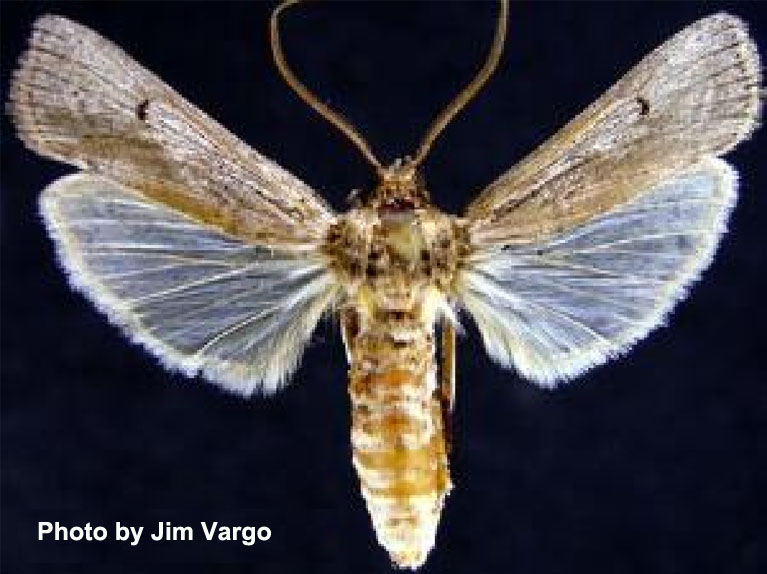Melitara junctolineella Hulst
Synonymy and Types
Melitara junctolineella Hulst, 1900, Can. Ent., 32: 173.
Type locality: Texas. Type deposition: American Museum of Natural History, New York.
Diagnosis
Adult
Melitara junctolineella and subumbrella can be distinguished from other Melitara by the male palpus that is obliquely ascending, whereas in other Melitara species, the labial palpus is porrect. A signum is present in the corpus bursae of junctolineella and subumbrella but absent in other Melitara. M. junctolineella can be distinguished from subumbrella by the forewings that are ochreous fuscous, wherease forewings of subumbrella are gray Neunzig (1997).
Larva
Final instar with head brown to dark brown, darker near mouthparts, near stemmata and in genal region; thoracic shield mostly yellowish brown, dark brown along posterior margin; body white with dark-blue or bluish-black transverse bands along dorso-posterior region of each segment; SD1 pinaculum ring on mesothorax and abdominal segment eight very weakly pigmented; peritreme of spiracle black Neunzig (1997).
Distribution
This species occurs in southern Texas from Brownsville on the Gulf coast to Presidio in western Texas. In Mexico, it occurs chiefly along the coastal plain south from Texas to near Tampico Neunzig (1997).
Life History and Larval Hosts
Life History: According to Mann (1969), moths appear from mid-January to May, and eggsticks, usually consisting of 10-12 eggs, are attached to the spines or spicules of the host cactus. Larvae of the first generation bore into young host cladodes. They feed as a group, and the cladodes quickly become necrotic and filled with rotting black tissue. Following this initial feeding, the larvae become solitary and attack older cladodes, entering near the top and boring down through the center. The entrance to the tunnel, and the tunnel itself, is usually filled with frass, and the stem swells characteristically where injured. The mature larva leaves the stem and pupates in debris on the soil surface. Second generation adults are in flight from late August to early November. Larvae of this second generation actively feed during the winter, and pupation begins in January.
Hosts: Opuntia rufida Engelmann, O. macrorhiza Engelmann var. macrorhiza, O. stricta (Haworth) var. stricta, O. lindheimeri Engelmann var. lindheimeri (Neunzig,1997).
References
Mann (1969), Neunzig (1997)


